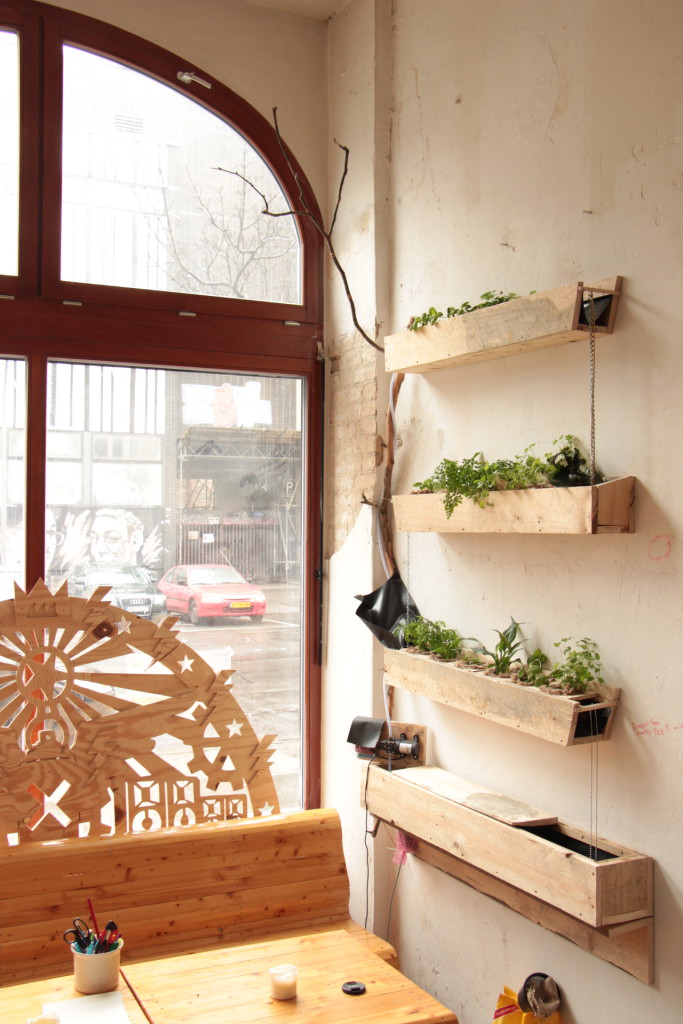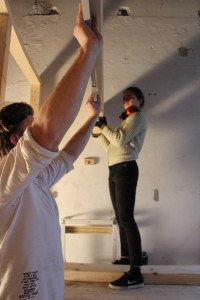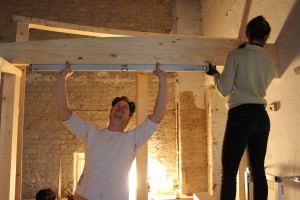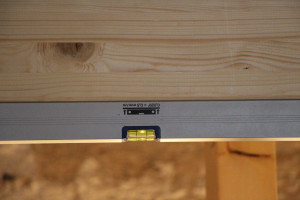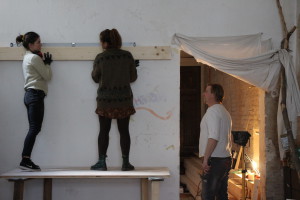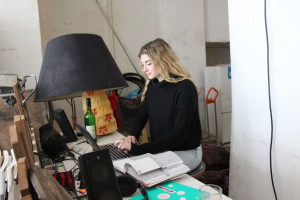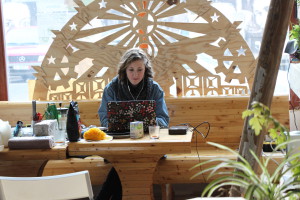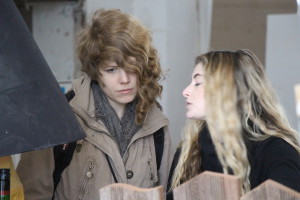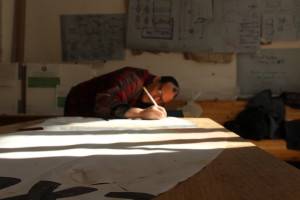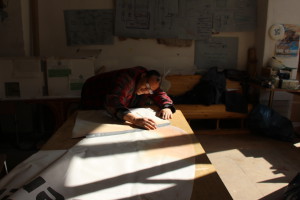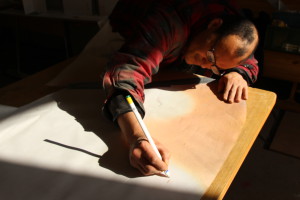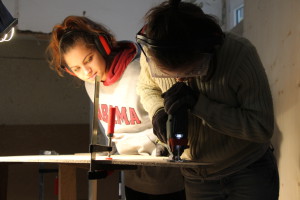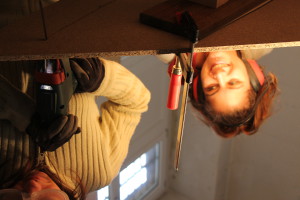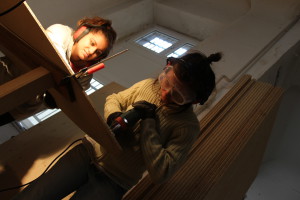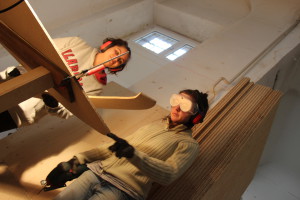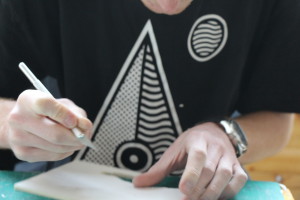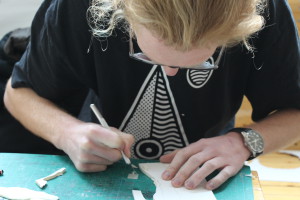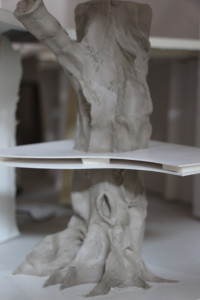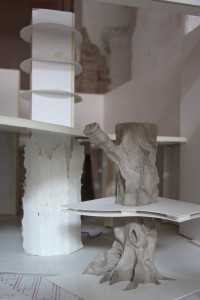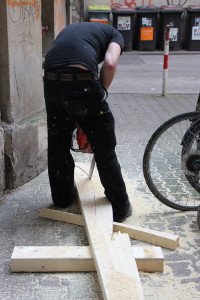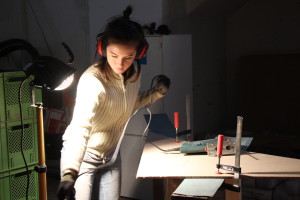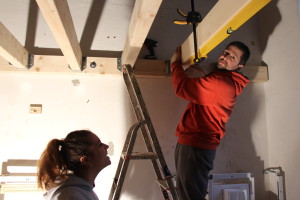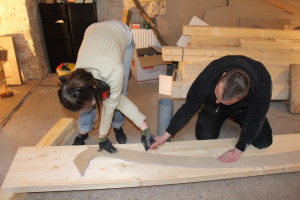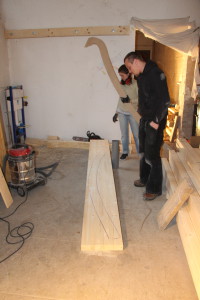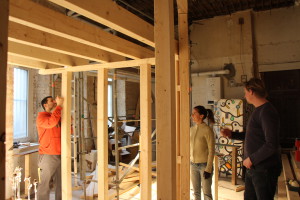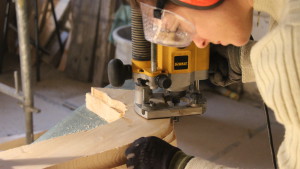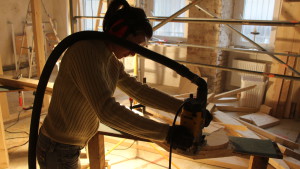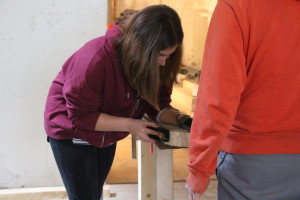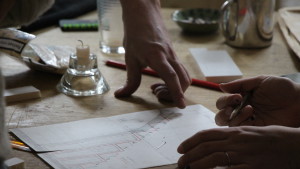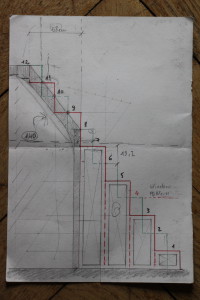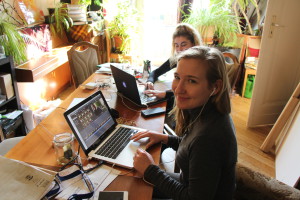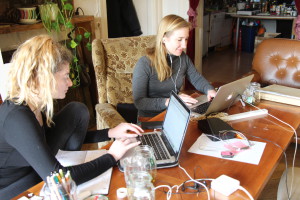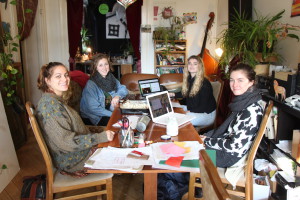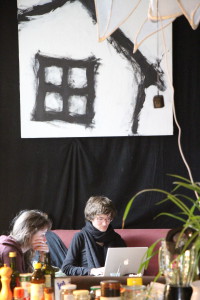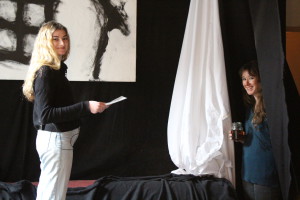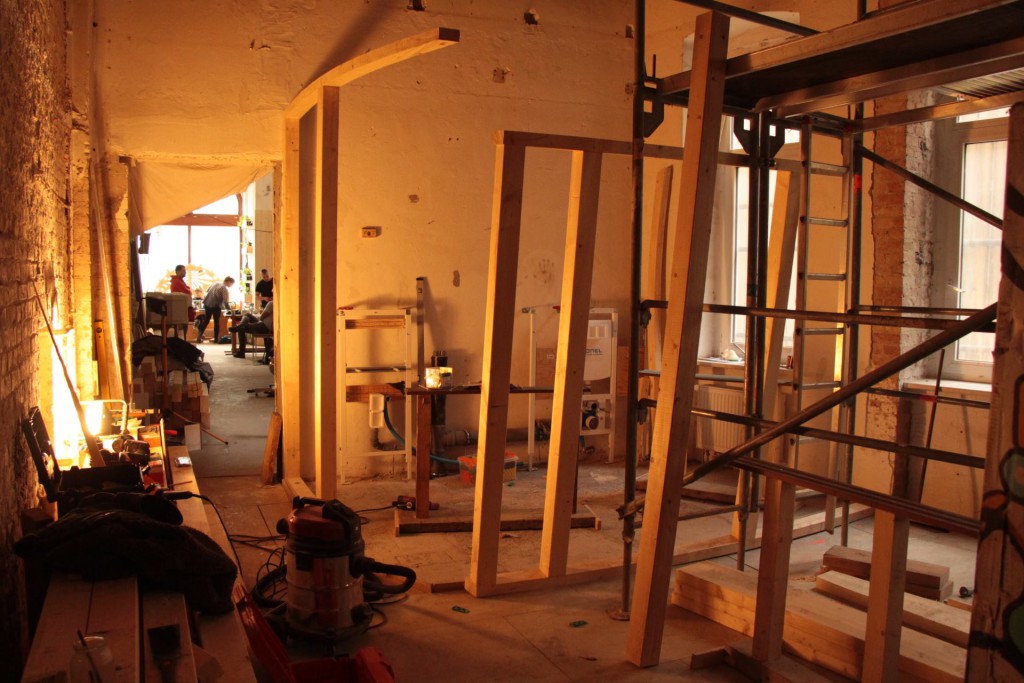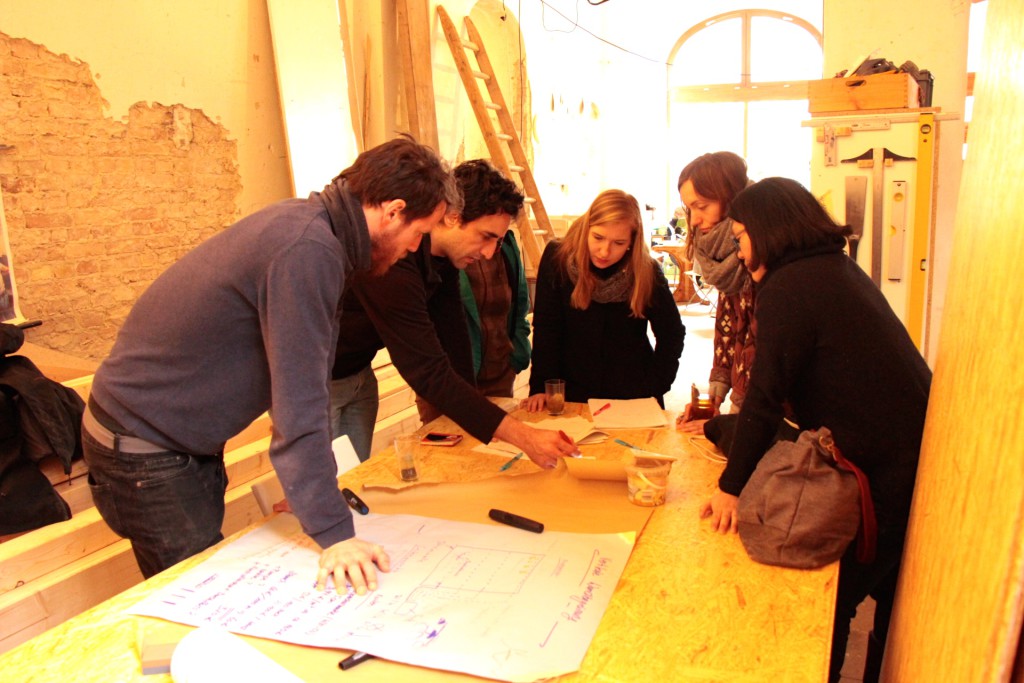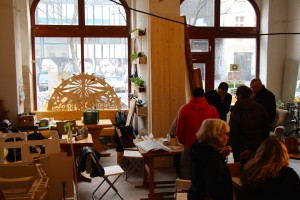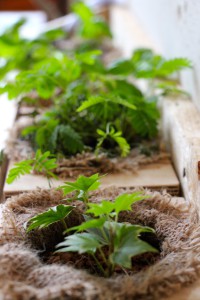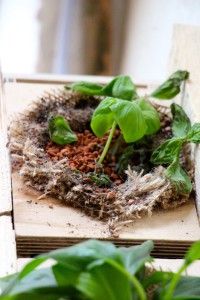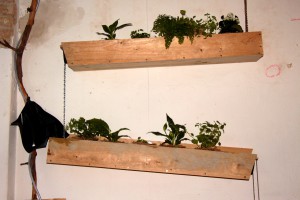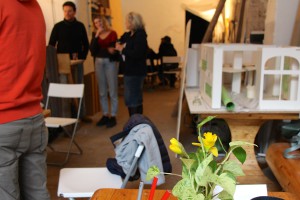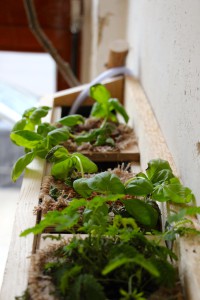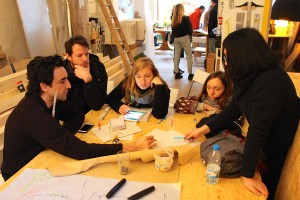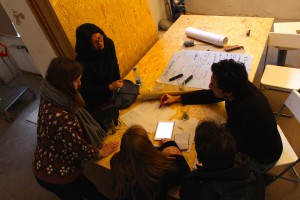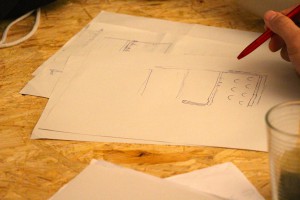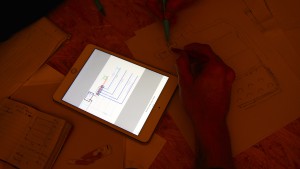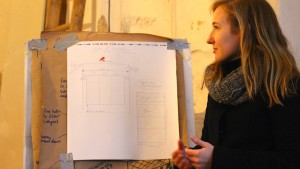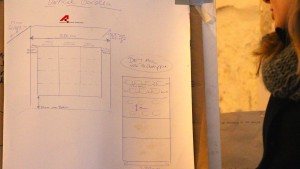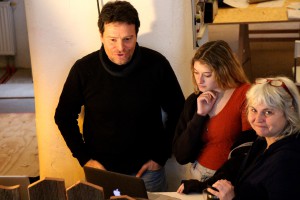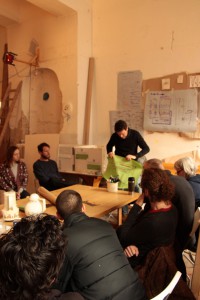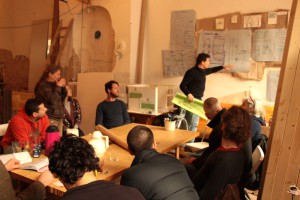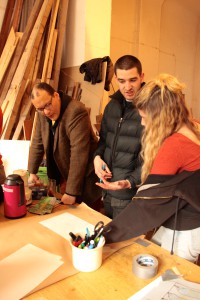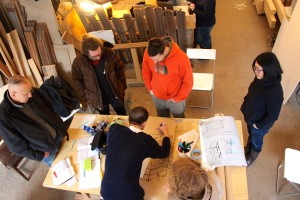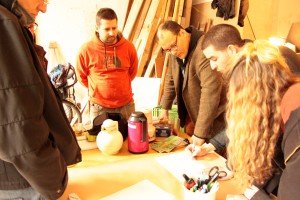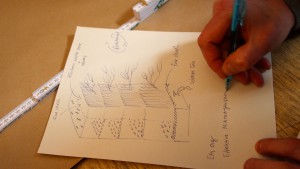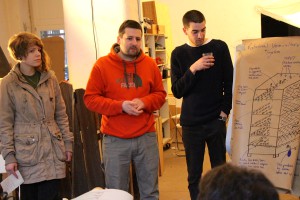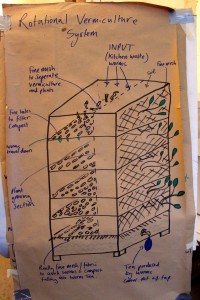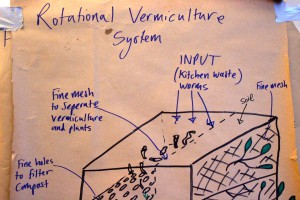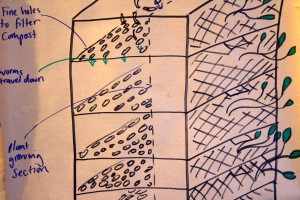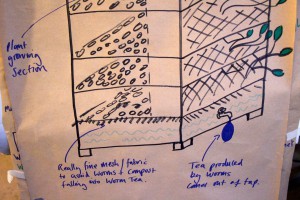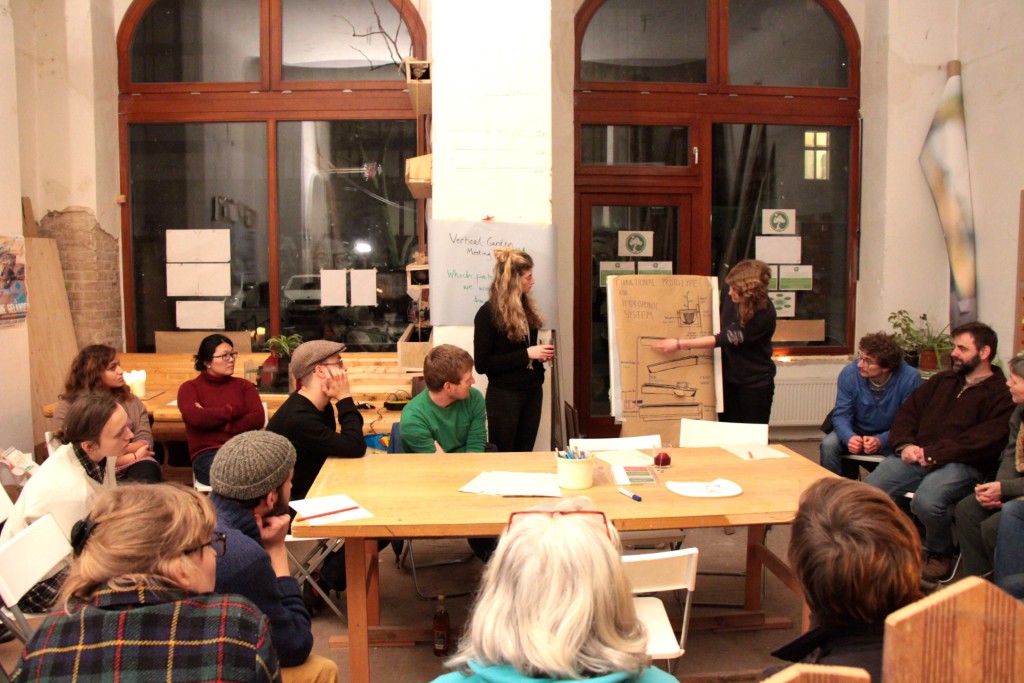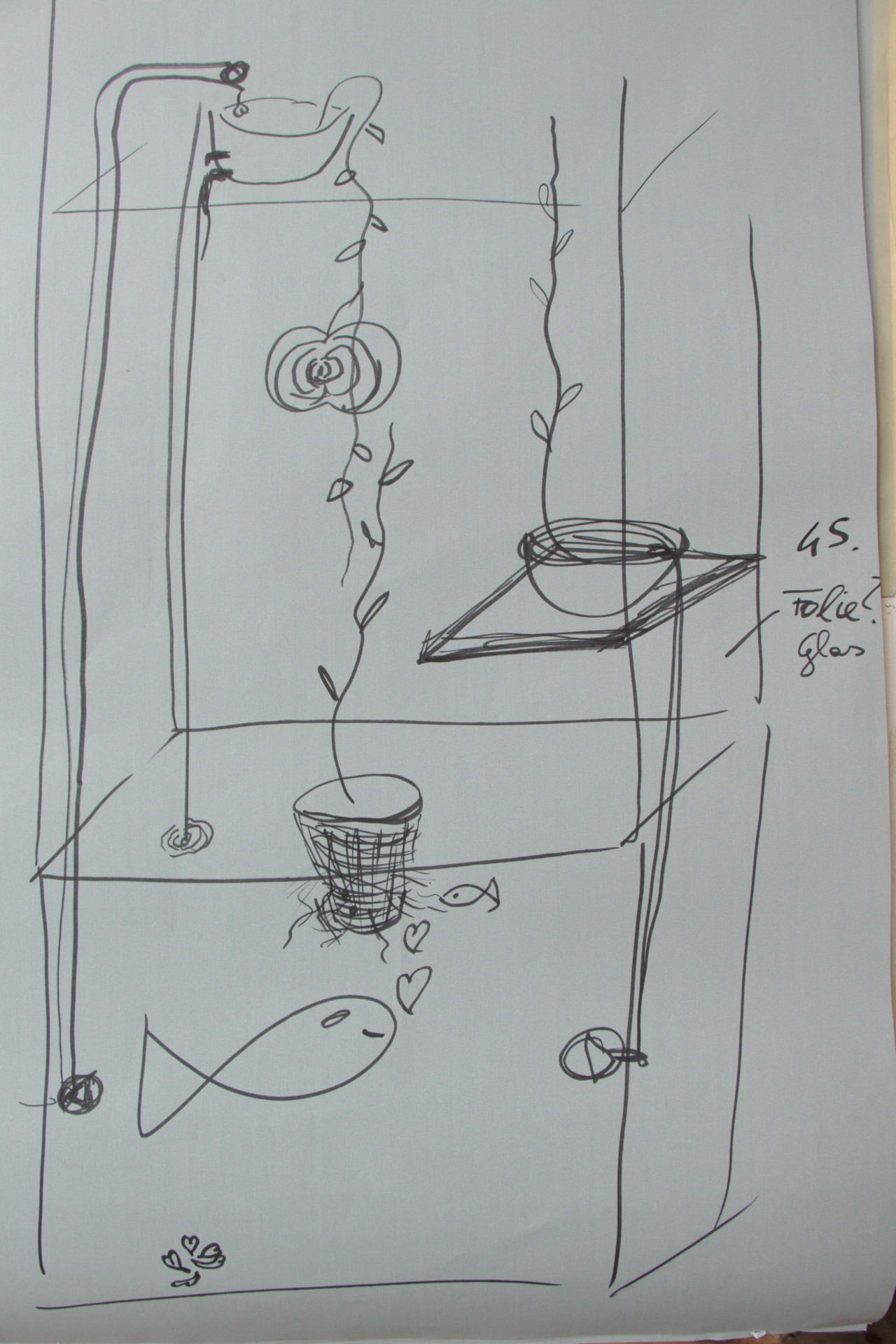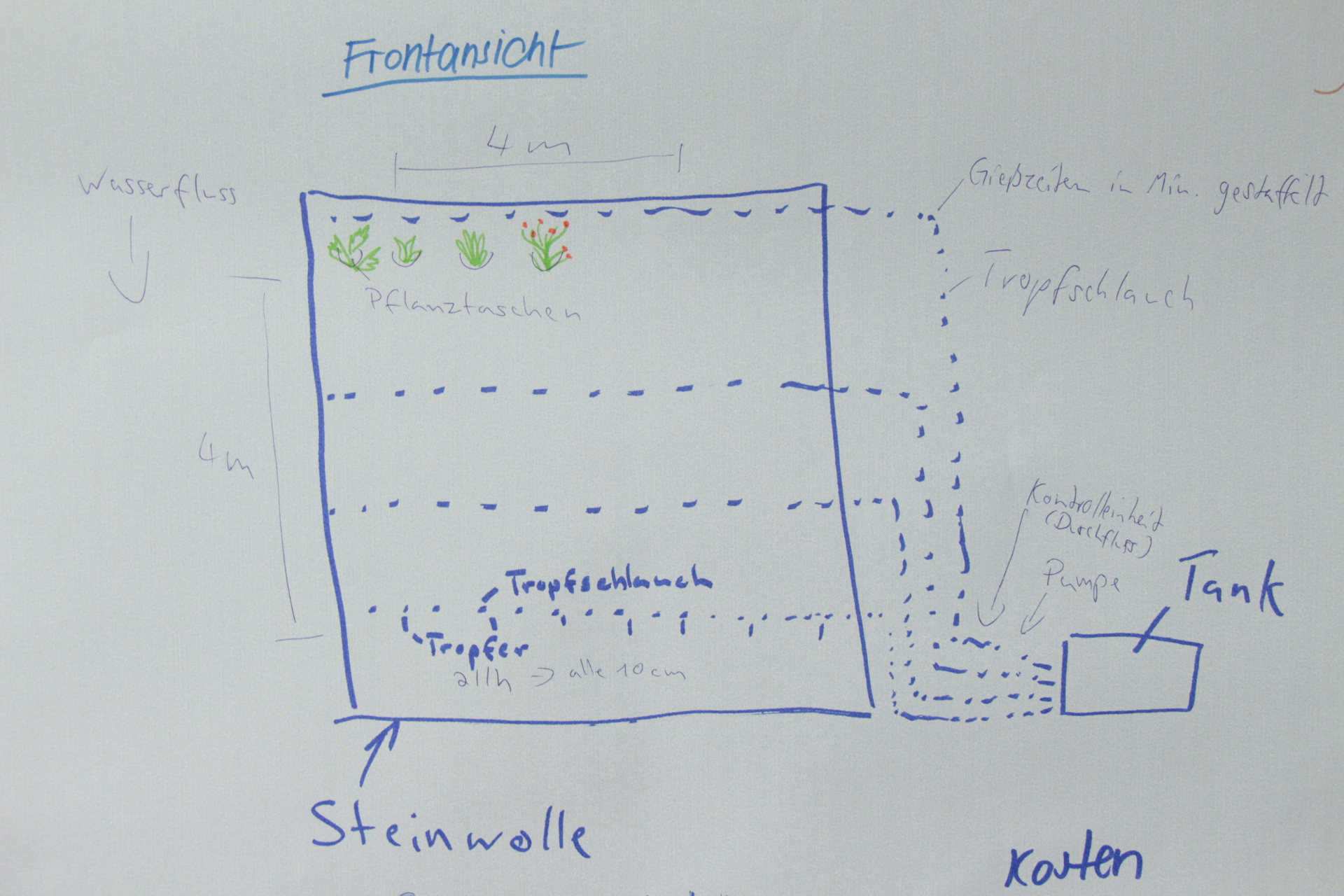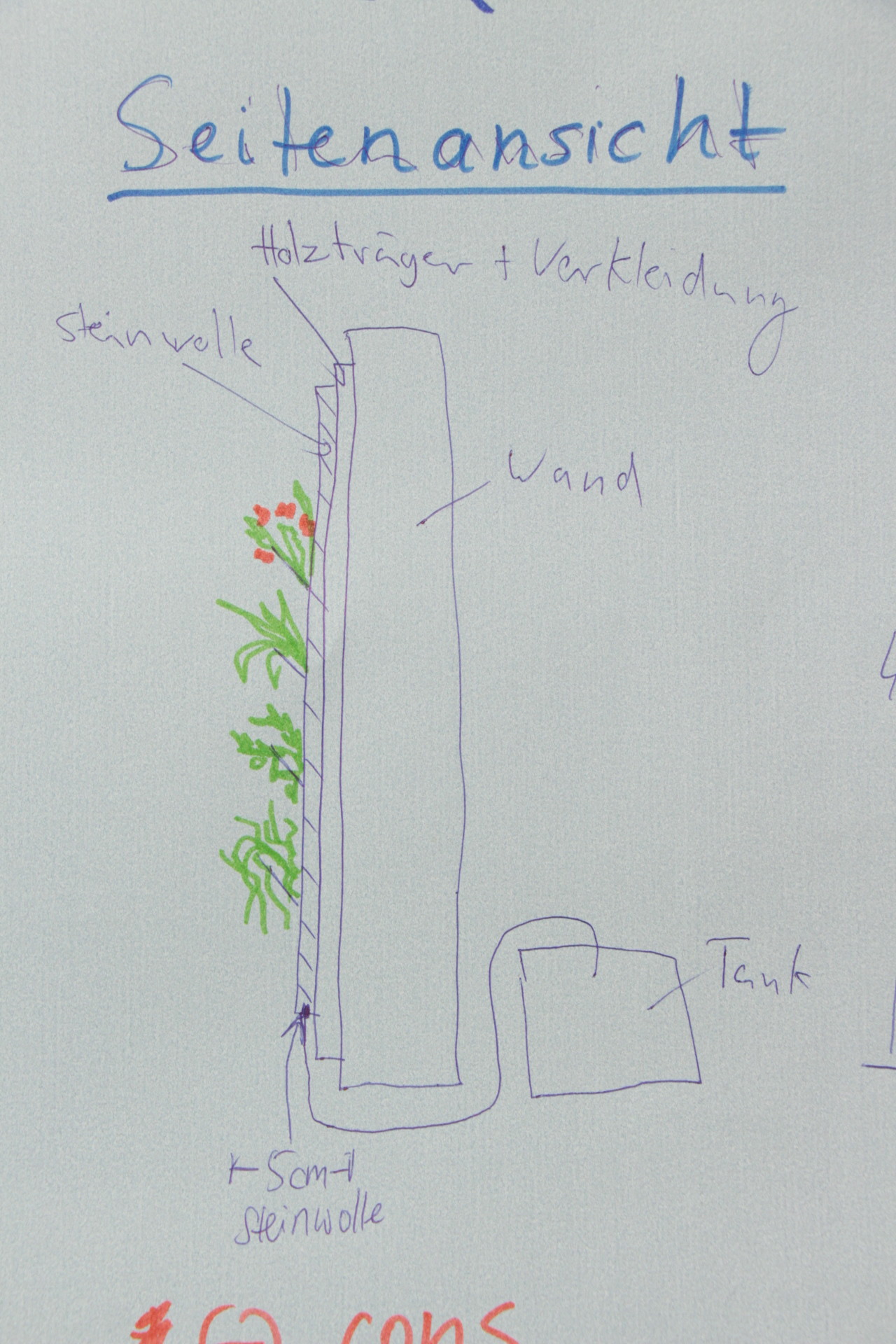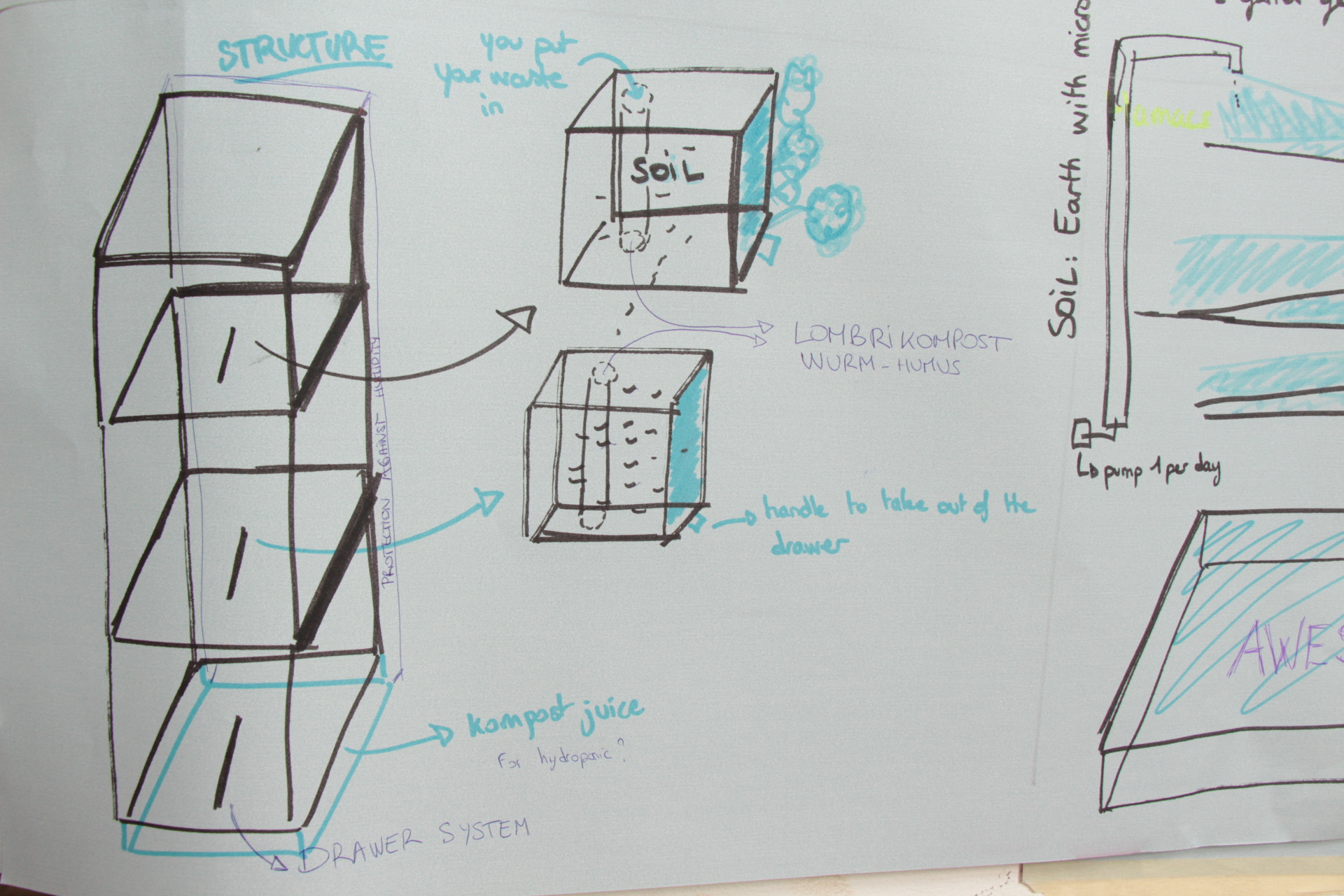Improvisational Groove Orchestra Session :: 24.03.
Meet some of our new interns and volunteers…
Das Baumhaus has been buzzing with a lot of new energy in the past couple weeks. Recently, we welcomed several new interns to our international community and together we have already accomplished so much.
In the project space, Leti and Sarah have been helping our regular volunteers, Sascha, Simon and Uli, build and design, confronting and overcoming any problems they have faced.
Luke has been developing and designing the tree and exploring with different textures and bark shapes.
Selene and Andre have been working behind the scenes, writing texts for different events and editing the script for a forthcoming Crowdfunding video that Lu has helped film. With such a powerful and international team, it is no wonder that we have been swiftly finishing projects and eagerly moving forward.
Many thanks to everyone!
Participate in helping to build Das Baumhaus over the next few weeks
Where: Gerichtstraße 23, Berlin, Germany (front house, ground floor)
Over the next few weeks, we will be continuing with building work at Das Baumhaus. We will be doing mostly wood framing. We will also be building full-scale prototypes in cardboard and wood, modelling with clay and holding design-sketching sessions. You can also help out constructing the various vertical garden prototypes.
Just select the days and times on our Doodle between 10am and 4pm that you would like to come by to help:
14.03-18.03 : http://doodle.com/poll/i6xx3756vh27ieg5
21.03 – 15.03 : http://doodle.com/poll/nbnxiiz2ann5egqc
28.03 – 01.04 : http://doodle.com/poll/d2ft5ptb5ezautx7
Bring snacks & drinks to share
Volunteers for food preparation are also welcome!
Bring clothes that you don’t mind getting a bit messy.
Thanks!
IMPROVISATIONAL GROOVE ORCHESTRA SESSION #29
When: 17th March 19:00 – 22:00
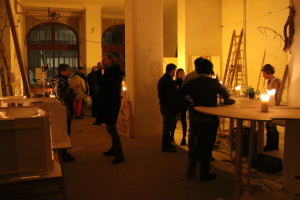 After our usual Open Office Hours (17:00 – 19:00), there will be an Improvisational Groove Orchestra session in Das Baumhaus.
After our usual Open Office Hours (17:00 – 19:00), there will be an Improvisational Groove Orchestra session in Das Baumhaus.• Check out a short clip from our last IGO session in Das Baumhaus:
• Here is a video showing another fun method, the human sequencer game:
Vertical Garden Update 03-03-2016
At our fifth meeting, we continued evaluating and developing on all prototypes. Our 6th meeting will be on Sunday 20th March from 17:00 – 20:00 in the Baumhaus. The aim is for each team to present their prototype to the rest of the group at this next meeting. So, over the next couple of weeks, all teams will be gathering building materials and organising work sessions to continue building their prototypes.
28-02-2016 – Vertical Garden and Permaculture Planning Meeting #5
Our fifth meeting was lively and productive! On this lovely Sunday afternoon, the sun shone in through the vast windows of the Baumhaus space, catalysing inspired ideas and friendly conversation.
At this meeting we heard updates from all teams on the progression of their prototypes. The rest of the group offered constructive feedback on how each could be improved upon further. In group work sessions, each team used the opportunity to plan the next steps in the development of their prototype, whether this be evaluating and refining their plan, ordering materials or organising a time to come by the space and build!
During the Meet and Greet at the start of the session we welcomed back many, who were by now veterans of our Vertical Garden project, and also introduced a few fresh faces to the group. Together, we then reviewed and evaluated how the ‘Waterfall’ hydroponic prototype, built 3 weeks ago, was running. Factors to consider were the durability of the burlap sack material as the plant pouches and whether the plants were receiving a sufficient supply of water. We also addressed some mould that started developing on a few plants.
Next, each team split into their working groups to evolve and build upon their own prototypes. At the end of the meeting, the results of these dynamic work sessions were shared with the rest of the group:
The ‘Lush Jungle’ hydroponic system had spent the meeting acquiring measurements of the wall on which they would install their 4m² living wall. They researched online and sourced the materials they needed to build a prototype measuring 1x4m over the next few weeks. They have also scheduled a meeting for next week to start building!
Next up for the ‘Tiny Aquaponics’ team, was to enlarge their already functioning prototype. In this meeting, they planned to obtain a larger fish tank and cut a hole in the glass cover to hold a hydroponic plant pot (plant with no soil). They will be experimenting to find the optimum plants for their shrimp system. This system will eventually be installed as a long narrow tank in one of the front windows of the space.
The last team continued to develop an exciting plan for how to build the most efficient soil system. They have decided to prototype a ‘Modular Rotational Vermiculture’ system. The basic principle is that worms are incorporated into a system of soil-filled boxes piled on top of each other. These worms break down kitchen waste into a useable and highly nutritious mulch-tea. This could then be used as a natural fertiliser for other vertical gardens in the space.
k.djvbk;jdbv;zdj
Direct Action: Brandenburg’s Lignite Coal Mining
Where: Baumhaus Planning HQ VH 3.OG , ring for ‘Bolden und Wohlert’
When: Thursday 3rd March 19:30-22:00
So we’re all active saving the world in Berlin – but what is happening just outside our city? Lignite coal mining, as it turns out, which is not just starting to pollute our own drinking water, but is also one of the worst things we can do to the climate.
Come join us at the Baumhaus this Thursday March 3rd to learn how to help put a stop to coal in Brandenburg and beyond. Activists from “Ende Gelände” (“Here and No Further”) present their anti-coal coalition and the international action in May.
7:30 Arrival, Meet and Greet
8:00 Presentation by “Ende Gelände”
9:00 Discussion, Ideas and Collaborations
Bring a friend, bring drinks, bring snacks. Bring your belief in the power of collective action and ideas.
::: About Coal in Brandenburg, Lusatia and Germany :::
In Brandenburg, in the lignite mining region Lusatia (an area about 90 minutes southeast of Berlin, located within the states of Saxony and Brandenburg) the coal industry is at a crucial juncture. Vattenfall, a large energy corporation in Germany, seeks to sell their coal mines and power plants in Lusatia to another company instead of shutting them down. But these lignite coal mines are incredibly destructive on both a local and global scale. Not only have over 30,000 residents in Lusatia been forced to relocate to make way for lignite mines, but also every ton of lignite burned produces one ton of Carbon Dioxide, making lignite coal the dirtiest of any other type of fuel. Germany is the world’s biggest lignite producer.
::: About “Ende Gelände 2016” – Here and no further for coal in Lusatia :::
“Ende Gelände” organises the international protests and actions of civil disobiedience that will be held from 13th to 16th of May (pentecoast) in Lusatia – to send a strong signal against coal and to overthrow the sale of the coal mines. At “Ende Gelände 2015”, 1500 people occupied the pit of a lignite coal mine in Rhineland. In order to stop climate change, we have to phase out coal immediately. And we have to do this ourselves. It is this idea that drives the coalition Ende Gelände, working for an anti-coal-movement in Germany.
Meeting For New CSA Baumhaus Members
Where: Baumhaus Berlin, Gerichtstraße 23, 13347 Berlin, Front House, Ground Floor
When: Thursday 25th February, 19:00 – 22:00
We are expanding our delivery of fresh organic produce from BioKräuterei Oberhavel. We are getting a greater share of the harvest so we will have new spot open for people who would like to join our group and pick up fresh organic veggies every week.
At this info meeting you will find out about the mission of the Baumhaus, BioKräuterei Oberhavel, how the system works and meet the current members of our group. In general, if you sign up then you are committing to a 1 year contract to pay for your portion of veggies to be delivered to the Baumhaus every week.
So we are looking for new interesting people to join our group and our community that meets for more than just picking up veggies! We can not take everyone into our group so there may also be another opportunity to join another group here in Weddding or start your own in your neighborhood.
Bring snacks to share, we will have some tea, beer, wine and water on a donation basis.
Vertical Garden update 15-02-2016
At our fourth meeting we continued developing prototypes. We also evaluated and improved upon two functional prototypes. Our 5th meeting will be on Sunday Feb 28 from 14:00 – 17:00 in the Baumhaus – bring food and snacks to share. We will continue evaluating and building on all prototypes. Team members will need to keep in touch with their groups, coordinate ordering materials with us (baumhaus.berlin@gmail.com) and prepare a building plan. If you would like to book a work session in the space to work on building your prototype, just get in touch with us to arrange a time.
11-02-2016 – Vertical Garden and Permaculture Planning Meeting #4
At this fourth meeting we focussed on prototype development and improvement; it was a well-paced, fun and effective meeting. About 25 people showed up and brought along plenty of knowledge and a collaborative spirit. We evaluated prototypes for the ‘Waterfall’ hydroponics concept and the ‘Tiny Aquaponics’ system.
The evening started off with a chilled meet-and-greet, giving us a chance to get a good look at these two prototypes in advance of presentations on these systems. We heard presentations from the ‘Modular Compost’ soil system and the ‘Lush Jungle’ hydroponic system later in the meeting. Each group considered the next steps in the evolution of their system. Before the meeting ended, each group reported on their next steps to continue their prototyping process, as we sipped delicious cocktails made by the one and only Sarah from The Wedding Space.
Now for a more in-depth review of each system:
The ‘Waterfall’ hydroponic system had been built over the past few days and was now mounted on one of the front walls of the space. This is a closed system, composed of a wooden water tank and 3 wooden plant troughs. The troughs are lined with pond liner to allow water to flow though and burlap plant pouches filled with Seramis are installed in each trough. A pump sends water to the top trough, which then flows gently back down through the system. The team explained how they built the prototype and assessed how sustainable it was, as seen in the photo below.The total material costs for this prototype were 200€. This included all the materials used to make the plant troughs, tank, controller and pump.
The rest of the group offered plenty of useful suggestions for improvement, such as more ecologically friendly materials and solar panels to power the system. In the next weeks, this group will be experimenting with light and watering conditions and monitoring the growth of the plants.
The ‘Tiny Aquaponics’ prototype combines shrimps with the roots of plants in a fish tank in a mutually beneficial relationship; shrimp poop provides nutrients for the plant, whilst the plant filters the water to maintain a suitable habitat for the shrimps. In the feedback session, the group suggested a few suitable pumps for this prototype (ram pump and tesla pump). Next, this group will be enlarging their prototype and experimenting on a bigger scale!
In our second hydroponics system, the ‘Lush Jungle’, garden plants are placed in fabric pockets stapled to a waterproof wall to create a full, flat living wall. They are watered from drippers from four different heights so that plants get enough water without constantly soaking the wall. The group talked us through developments in their plans to build a 4x4m living wall. They had found a more durable alternative to rockwool, to root the plants into the system. We considered additional lighting systems to supplement natural light at the walls furthest from the windows. Another suggestion was that they source plants that would otherwise be thrown away from plant nurseries. Next up for this team, they will be drawing up a list of materials to order and building their prototype.
The last system to prototype is a ‘Modular Compost’ soil system, a vertical tower garden complete with a vermicomposting system (compost with worms and old food). The prototype will be made up of box shaped containers which will allow the plants roots ample room. Group feedback included suggestions for alternate natural fertilisers, such as mushrooms and a similar composting system with ants. Now, the team will work out the dimensions of their unit and how to use the space available in the most efficient way. They will be choosing plants and prototyping over the next few weeks.
Next Vertical Garden Planning Meeting :: Sunday 28 Feb
Where: Baumhaus Berlin, Gerichtstraße 23, 13347 Berlin, Front House, Ground Floor
When: 14:00 – 17:00, Sunday 28 Feb
At our fourth meeting we continued developing prototypes. We also evaluated and improved upon two functional prototypes. At our 5th meeting, we will continue evaluating and building on all prototypes. Team members will need to keep in touch with their groups, coordinate ordering materials with us (baumhaus.berlin@gmail.com
Please bring snacks and drinks to share.
For a full update of the last meeting, check out our vertical garden page.
And read about how we created our first functional prototype, for the ‘Waterfall’ hydroponic system.
Here’s the Facebook event.
